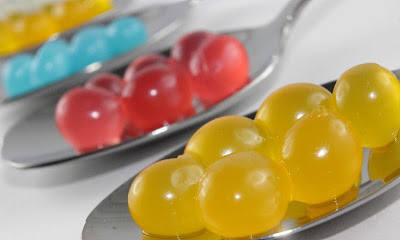Exceptional food that worth a special journey. And all other foods that can kill you.
Monday
Is Pre-washed Salad Safe?
Pre-washed Salad is
a Dirty Trick
Pre-washed
salads are typically washed in chlorine solution twenty times stronger than that
in a swimming pool.
Sales of salads in developed countries are almost double
what they were a decade ago. It’s not that we have become so enamored with
healthy, low-calorie living that we are actually eating that much more – rather
that supermarkets have found a way of adding value to this simplest and
freshest of foods, by providing it in pre-washed
form. It seems a wonderfully convenient way of eating healthily.
When you see a salad inside its clear sealed plastic bag,
you might think that the bag contains just air and salad. In fact, it’s not air
in the bag, but a modified form in which
levels of oxygen have been reduced from the normal 21% to just 3% and carbon dioxide levels have been raised.
Oxygen is the gas that makes fruit and vegetables go brown and limp after they are picked. So reducing the oxygen keeps
the salad fresh much longer. In fact, salads kept in this modified-atmosphere packaging (MAP) can stay looking fresh for up
to a month.
Despite their apparent freshness, however, MAP wrapped salads
may not be quite as healthy as they look. Research by Italian scientists at the
Rome Institute of Food and Nutrition suggests that MAP packed lettuces lose many of their nutrients. Indeed,
many of the antioxidant nutrients that make green salad vegetables good for
health, such as vitamins C and E and poly - phenols, all seem to be reduced.
The problem is not that the MAP process actually robs salads of their
nutrients; unwrapped salads also lose their nutrients quickly after they are
picked. But you can tell the nutrients are gone in an unwrapped salad because it goes limp. With MAP, it stays
looking fresh after its nutrient value has diminished.
The nutrient content of packed salad may be further
reduced by the way it’s washed. Supermarkets are very conscious of the possibility
of food-poisoning from packaged salad. Because salads are typically neither
cooked nor washed by consumers, they have to be free from contamination if they
are not to cause outbreaks of E. coli or
salmonella illnesses. Rather than take any risk of causing such an outbreak,
supermarkets insist that their salads are carefully washed in what is
effectively disinfectant. According to one food company boss, salads are typically soaked in a bath which contains
50mg of chlorine in every liter of water – that’s twenty times the concentration of chlorine in an average swimming
pool. Whether this heavy chlorination does anyone any harm no one knows, but
many people think it at least kills some of the salad’s taste.
Dilute mixtures of chlorine bleach and water are a common
and cost-effective method for sanitizing equipment in food processing operations. When used properly, chlorine bleach can be a very effective
method of killing undesirable microorganisms. Processors should be aware, however, that there are
regulations concerning the use of this
sanitizer. The germ-killing effect in a solution of chlorine bleach and water is due to available
chlorine, present as hypochlorite and hypochlorous acid. United States Federal regulations (21
CFR Part 178) permit the use of
sanitizing solutions containing sodium
hypochlorite on food processing equipment and food contact articles with
the following provisions:
1) Equipment or
articles sanitized with the solution must be allowed
to drain adequately before contact with food.
2) Solutions
used for sanitizing equipment shall not
exceed 200 parts per million (ppm)
available chlorine.
In addition to sanitizing
food contact surfaces, chlorine bleach solutions may be used for sanitizing raw
fruits and vegetables during the washing
or peeling process. The U.S. federal regulations that apply differ slightly from those for sanitizing
solutions given above. The regulations (21
CFR Part 173) specify two conditions for the permitted use of
hypochlorite solutions in washing produce:
1) The concentration of sanitizer in
the wash water must not exceed 2000 ppm hypochlorite.
2) The produce must be rinsed with potable water following the chlorine treatment.
Most operations,
unless the produce is very dirty, will not need a sanitizer concentration greater than 200 ppm total chlorine to achieve the desired sanitizing effect. Contact
times of one minute or greater are
typically sufficient to achieve a thorough kill.
The regulations do not
specify a permissible residual level of chlorine.
Presumably, the fresh water rinse eliminates any potential problem with
residual chlorine. As a practical matter, residual chlorine would in most foods produce highly
objectionable flavors and odors well
before becoming a safety hazard. Food processing in-plant chlorination systems typically
produce water for processing with
residual available chlorine levels of no more than 0.5 ppm. For container cooling or general washing, residual
available chlorine levels of 2 to 7 ppm
are commonly used. Typical municipal water systems produce potable water with a residual
available chlorine level of 0.25 to 2
ppm.
Subscribe to:
Post Comments (Atom)


No comments:
Post a Comment